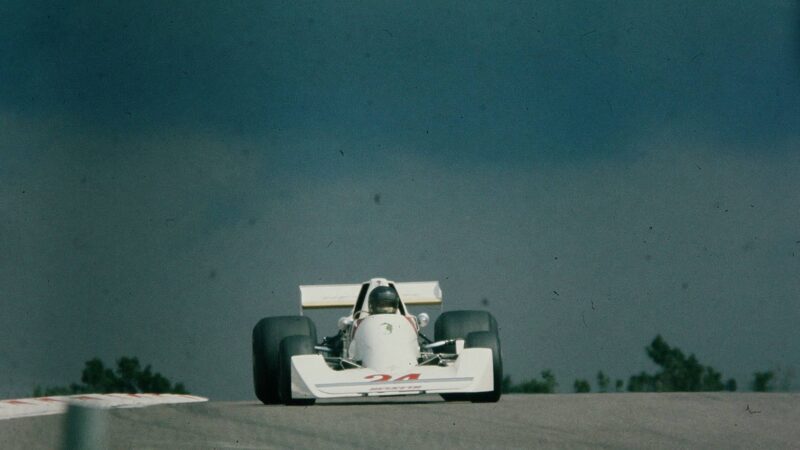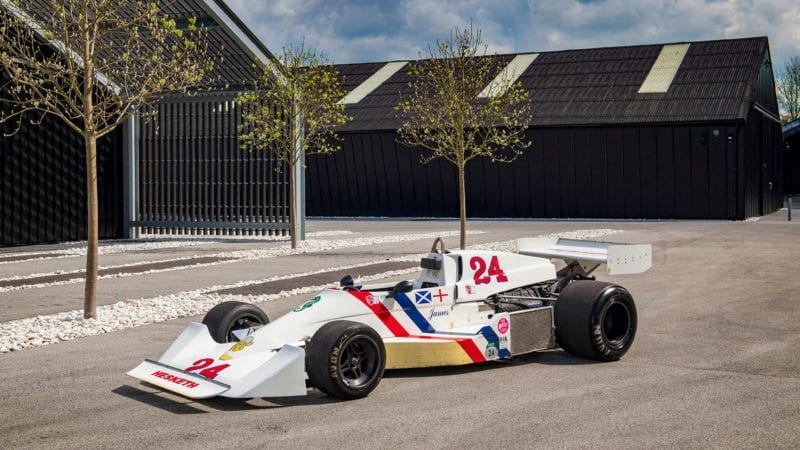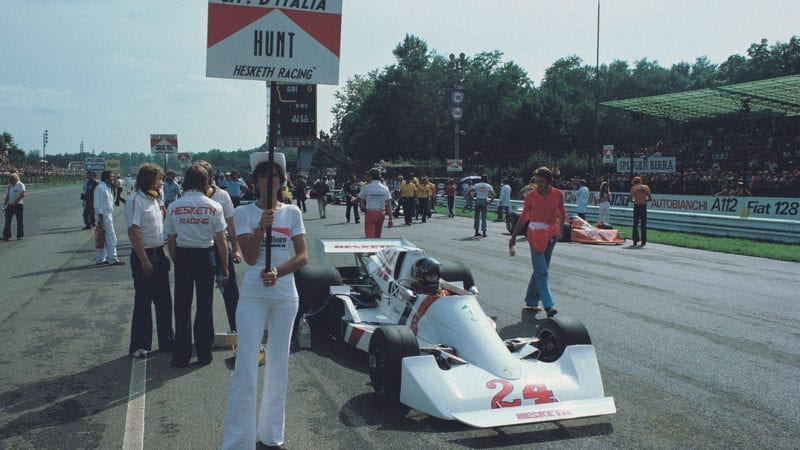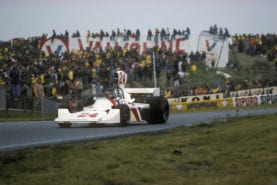“James was able to describe what was happening in the car in a way that Harvey found wholly comprehensible and was able to react to in a positive way.”
The result of that reaction was the Hesketh 308C.
The car has several unusual design features, including being one of the few cars on the grid in ’75 to not have an airbox, unconventional rear suspension set-up and also have its radiators right up against the rear wheels. Lord Hesketh says the freedom team members were afforded resulted in greater lateral thinking towards design.
“These processes happen when the operation is not entirely being run as a business. In those days, there were teams that were not dependant on being a business,” he says.
“You have some teams that are run by control freaks, but we were at the opposite end of the spectrum. The great thing about not having a sponsor, everyone can get on with their job and didn’t have to worry about anything!”
Hesketh went on to detail what made the car unique.
“It was the ultimate expression of a small F1 car,” he comments. “It was the first one to have major bits of carbon fibre as part of its actual chassis.”
“It was also the first to use rubber suspension at the rear [mounted on rockers]. This was done with Malaysian Rubber Company.”
The team’s chief engineer, Nigel Stroud, explained to Motor Sport in his and the team’s typically relaxed fashion how he came up with the components he contributed.
“Harvey absolutely hated my front brake ducts – because he didn’t do them!” Nigel Stroud
“I did the front wing, and the front brake ducts. Harvey absolutely hated the latter – because he was Harvey! He didn’t do them,” Stroud says laughing. “They were just knocked up from a bit of aluminium in an afternoon.
In keeping with the team’s quirky reputation, Stroud is laidback in the extreme as to explaining the inspiration behind the design.
“Oh I don’t know, it had to have a front wing!” he says. “There were some horrible suspension bits sticking up in the air [at the front] that were seriously un-aerodynamic. So I decided to bung a couple of brake ducts in front of them, which I thought was quite sensible.”
As Hesketh could no longer afford to fund the team beyond ’75, the small squad needed a sponsor. It ploughed on with the car design anyway in the hope that one would be found.
“It was a progression but you had to do it, because you had to assume we would get the finance from somewhere,” Hesketh says.

Hunt competed in two championship races with the 308C and one non-championship race pictured here – the Swiss GP at Dijon
Duncan Hamilton ROFGO
“If we hadn’t, we’d have looked pretty silly with the old car!”
Asked if he thought the Hesketh team might have been able to go on to more success with the 308C in ’76, he replies: “I dunno, it might’ve been a turkey!”
Though Hesketh himself insists he’s unsentimental, what the car represents for him and the key members of that team is the end of a racing dream. The rock ‘n’ roll F1 band would have to be broken up.
“What what was going to happen was that two people would have to go – and that was James and Harvey,” he says.
“For their careers and for money. James had quite a lot of world championship points but probably made less money than anyone else contemporaneously by quite a wide margin.”
Stroud is more reflective in contemplating what might have been.
“I think we gained a lot of respect from the other teams, in our first year [with their own car],” he says. “It was just a shame it didn’t continue.”



